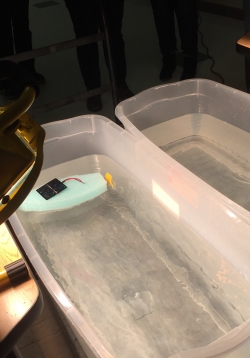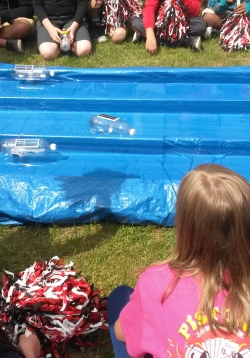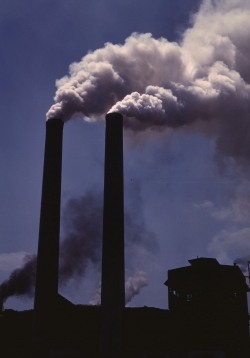What is Force?
Students will build a barge out of tin foil and describe the forces acting it. The barge itself is designed only with the constraints that passengers within the barge will not get wet, allowing for students to experiment with different shapes and...
Solar Boat Science Investigation
Design a science investigation to test a solar speedboat, airboat, and surface submarine. Students will use the “Planning an Investigation Template” in order to determine their motivations for designing a solar boat, make predictions about the outcomes...
Collect Data and Compare Performance of Different Boat Designs
Students will race the solar speedboats, airboats, and surface submarines and then compare the performance results and of the various types of solar boats made by the class. Students will compare and contrast forces acting on the system by examining the...
Solar Cars Science Investigation
Students will design a science investigation to test solar car with a pulley or with a variety of gear sizes. In the previous lesson, they were introduced to the different types of systems that can be employed on their car. In this lesson they will use...
Build Solar Cars
Students will build their solar vehicles. There are many options for them to do this, depending on the specific variables hoping to be tested following the construction and material-selection process. Students will be given the opportunity to try out...
Collect Data...Then Compare and Contrast
Students will race different iterations of solar cars: geared and pulley-system cars using varying gear ratios. Students will have the opportunity to make predictions, record data, and explain the results centered on the selection of these different...
Solar Ovens: Frontload Vocab. And Preview Standards
Vocabulary and standards will be reviewed throughout all of the lessons, but this day is dedicated to front loading the vocabulary and previewing the standards. Students will use their energy workbook to keep track of vocabulary from this point forward...
Non-renewable Energy/Global Warming/Pollution
NOTE: THIS LESSON RELIES ON EPA CLIMATE CHANGE RESOURCES THAT ARE NO LONGER AVAILABLE. STUDENTENERGY.ORG PROVIDES A POSSIBLE ALTERNATIVE RESOURCE.
This lesson will introduce the students to worldwide problems that we have with energy. (91% of the...
Renewable/Green Energy
In this lesson, students will be introduced to the different forms of renewable/green energy. They will learn about the photovoltaic cells installed in our school district, Beaverton Schools. However, any project on
Solar vs. Battery Circuits
In this lesson, students will explore and do small experiments with mini solar panels and circuit boards. The class will discuss the advantages and disadvantages of solar energy. Students will continue to work in their Solar Energy Student Notebooks to...







